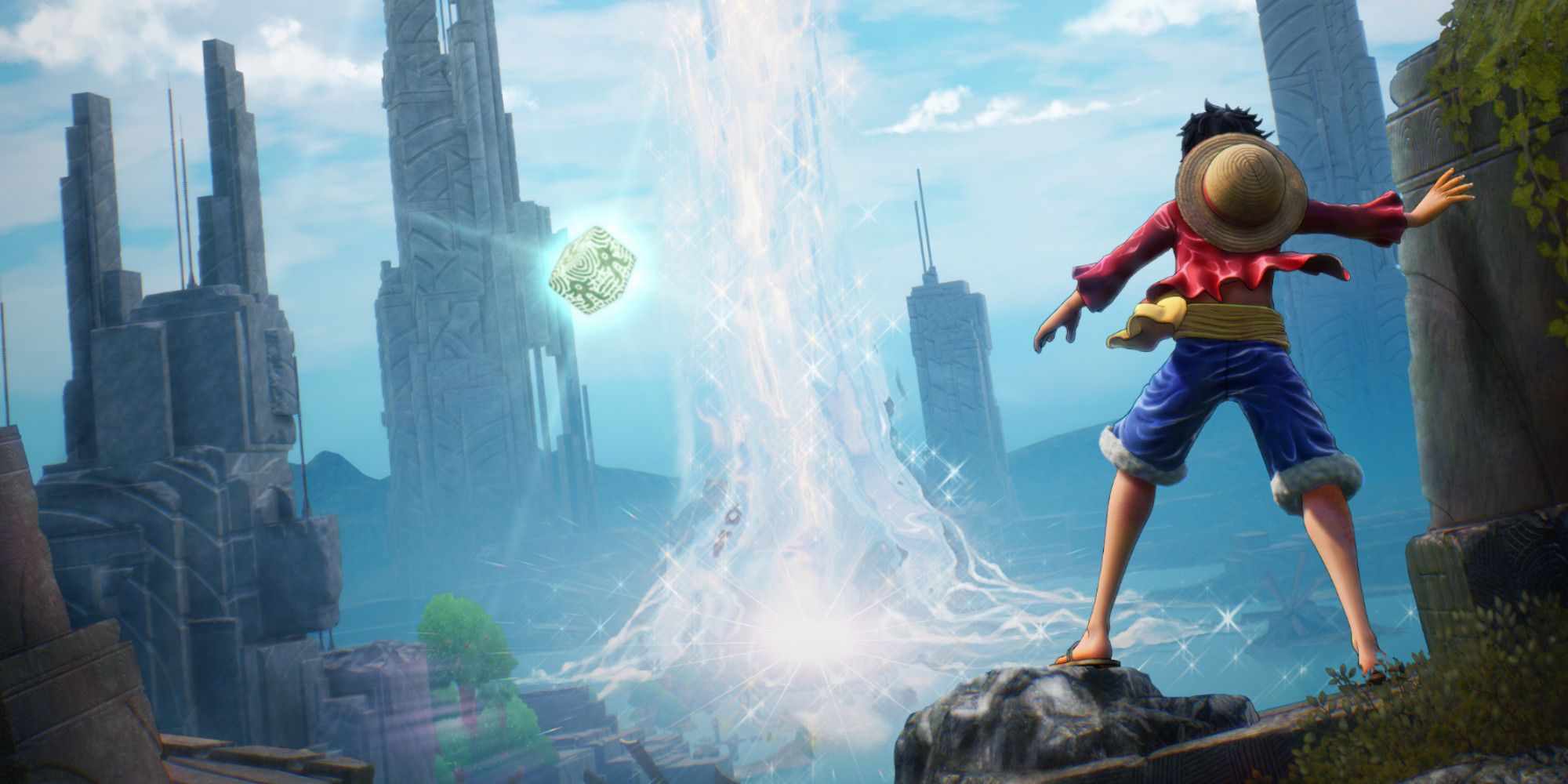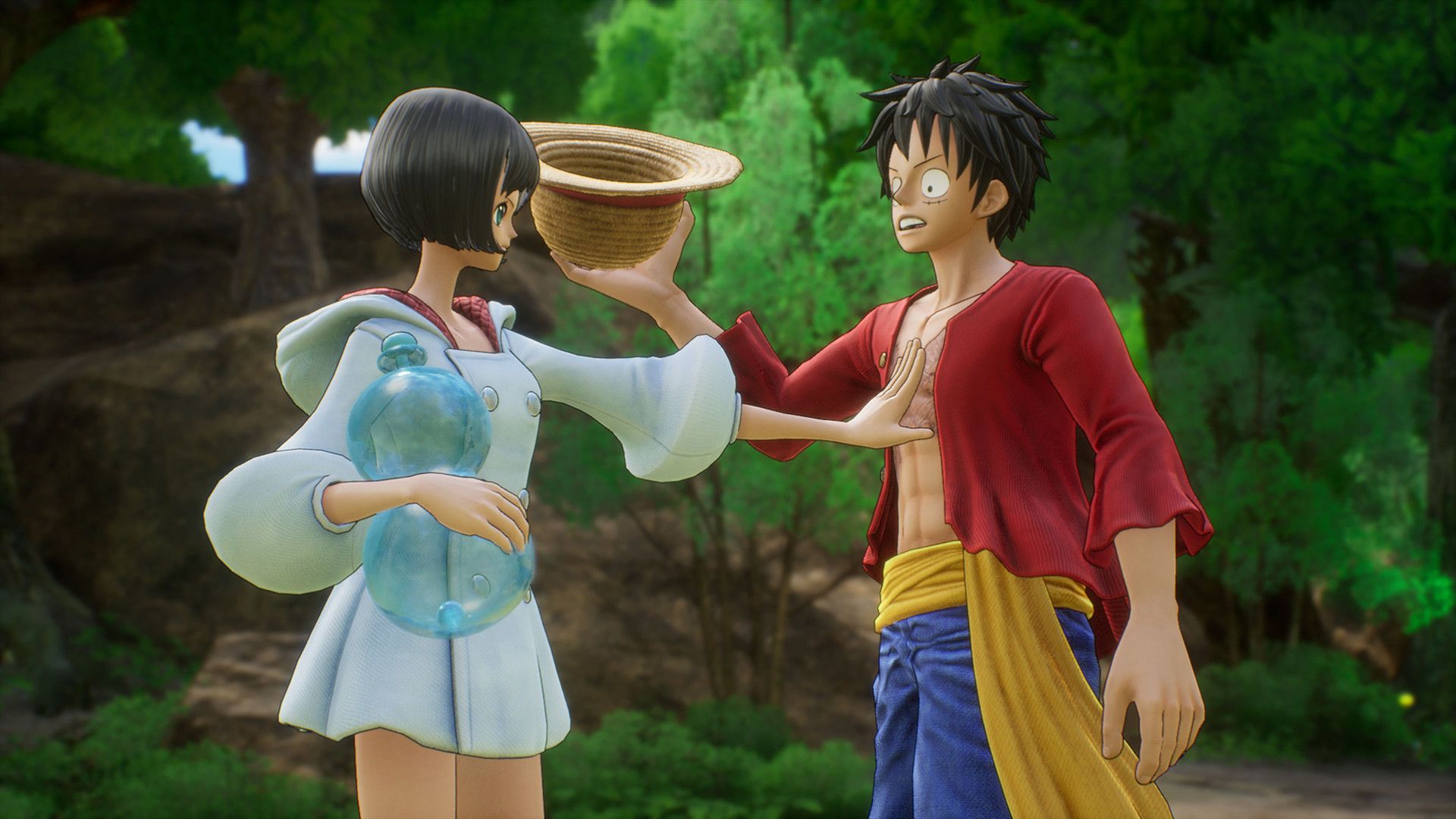Ahead of our One Piece Odyssey play session (aboard the Star of India, the world’s oldest active sailing ship), a group of journalists sat in the lower deck watching a video of producer Katsuaki Tsuzuki explain, in great detail, every system and mechanic in the game. While describing Odyssey, Tsuzuki explained all the ways the developers managed to avoid the shortcomings of traditional RPGs. RPG battles tend to get boring after a while, so One Piece Odyssey has a new kind of dynamic battle system. Exploring in RPGs is monotonous, so One Piece Odyssey gives you a whole team of characters with their own individual exploration abilities. Characters in turn-based RPGs tend to level up in a linear, unengaging way, so One Piece has a unique ‘Skill Up’ system. RPGs are boring, but One Piece Odyssey isn’t.
Tsuzuki doesn’t sound particularly fond of traditional turn-based RPG conventions, but neither am I, so everything he said was music to my ears. Perhaps he expected there’d be others like me in the press group and tailored his presentation for us, the impatient philistines that don’t have the attention span to play 80-hour JRPGs because we used up all of our dopamine playing Halo 2 for 16 hours at a time. Whatever the case may be, Tsuzuki had me sold before I even picked up the controller, and for the most part he was telling the truth - One Piece Odyssey makes significant effort to refresh the turn-based RPG genre with interesting new mechanics and gameplay variety.
Odyssey tells an original story by One Piece creator Eiichiro Oda that begins with Luffy and the Straw Hat Crew crash-landing on a mysterious island called Waford. There they meet the game’s two original characters, Lim and Adio, who steal the crew’s powers and scatter them across Waford in the form of cube fragments. The journey to recover their powers takes the Straw Hat Crew to dangerous places across Waford, as well as places from their memories, including Alabasta. Though players will be revisiting locations from One Piece history, all of the story lines will be completely original to the game.
I am far from a One Piece expert, but from the few chapters I’ve read and the episodes I’ve seen, I’m impressed by the authenticity of Odyssey. In a roundtable interview after the play session, producer Rei Hirata says the developers knew how important it was to capture the voice and personalities of the characters, so they worked very closely with Oda, who worked on the One Piece movie Stampede during development, to make sure they got each member of the crew right. That effort comes through in the writing and performances from the original anime cast right away. Even outside of the frequent cutscenes, the entire crew is constantly playing off one another in background dialogue. If you like the One Piece characters, you’re going to get a whole lot of them here.
The entire crew can be used in combat as well. Odyssey’s Command Battles use a ‘Scramble Battle Area system’, which basically means there are multiple zones where heroes and monsters can be positioned in any battle. Not only are you managing everyone’s turn order, health, and mana (called Tension Points), but you also have to factor in range and positioning. Some skills can only target close-range enemies, and characters confronted by monsters in their area aren’t able to attack long-range targets. The segmented battlefield adds a dimension to battles that most turn-based games don’t have.
Further complicating combat are battle types, which is a rock-paper-scissors system that influences the effectiveness of each attack. Every hero, skill, and monster has its own battle type, so to be effective you have to match up the attacks you use with enemies that will be weak to it.
The scramble part of the scramble battle area system is your ability to freely move your characters around the battlefield to mitigate damage and fight efficiently. Between your four active and four reserve fighters, you can swap characters between zones in order to manipulate the turn order, position strong characters against weak enemies, and protect soft characters from powerful attacks. In an ideal fight, you can move all of your characters around to face matching enemies and eliminate them in perfect sequence before any of them have a chance to attack. It’s not exactly a tactical RPG like Fire Emblem or Midnight Suns, but there’s a higher degree of strategy here than in any other turn-based RPG I’ve played before.
It’s not the easiest system to pick up, and there are a lot more complexities to it than what I’ve mentioned here, but the tutorial does a great job easing you into it and by the end of my three hour session, I felt like I had a real handle on all the intricacies of combat. Information can be a little opaque at times. The amount of damage each character can do with their basic attack is never revealed until you use it, and it’s hard to keep track of what each monster’s weakness is when you’re trying to swap your characters into the right position. I got a little fatigued trying to remember what type each enemy was because it only tells you whether the character that’s facing them will be strong or weak, so you have to do a little mental math each time you do a swap. “If Zoro’s attack is weak and his battle type is Technique that means the monster’s battle type is Strength which means I need to swap Zoro with a Speed type like Nami” is a lot to work through multiple times each turn, when it feels like the game could just put a highlight on whichever characters would have an advantage in that position.
Tsuzuki and Hirata both emphasize that new systems and mechanics are introduced frequently throughout the entire game, so the three hours I played may have only scratched the surface. Nonetheless, I’m enthusiastic about what I’ve seen so far. One Piece is new to me and this isn’t exactly my kind of game, but I can appreciate a well-designed combat system and an adaptation that tries to respect the fanbase. You never really know what to expect from licensed games, but I don’t think One Piece or JRPG fans have anything to worry about.


